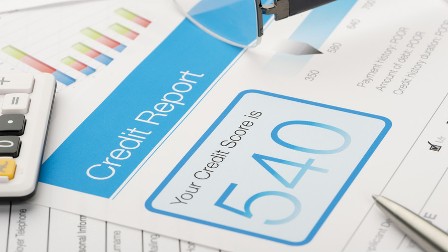
Bad scores, without a doubt, can be costly and stressful. It is the poor financial decisions such as auto loan, mortgage plan, low balance, or overspending is what may affect your credit scores. Building good credit scores is one way you can do to stabilize your credit rating. Plus, it is crucial to avail credit card rewards, borrow money, and access products and services such as loans.
No matter how worse the situation might seem, poor credit rating doesn’t last forever if you take precautionary steps to improve your credit scores. That means credit rating is basically a reflection of credit history. It changes when new information or scoring is added to a credit report. And when you start handling your credit scores efficiently and more responsibly, the rating improves.
If you’re looking for some effective steps to raise your credit scores, we have you covered here. But before that, let’s clear our understanding of what a credit score is and how you can check it.
What is a Credit Score?
As mentioned above, credit scores are created from the rating held in a credit report that is also called a credit file.
Your credit score number can be different for different products, even if they are from the same loan company. It primarily depends on criteria that are used for assessing your credit file as a customer. The information sourced from your credit report is often used to decide:
- Whether to borrow you or not?
- How much interest should be charged from you?
- How much can you borrow?
The recent the file is, the greater the impact it will create. Lenders, banks, or loan companies are more interested in the current financial state of the filer. That means your financial decisions of the past six years, whether good or bad, must be on the record.
If your credit file shows an inconsistent payment record, the lender can charge you higher interest. You might not be considered an eligible candidate for loans. Your missed payment record can raise the concerns of your lender, and he/she might consider lending you money is of high-risk.
Moreover, your credit record or credit history affects your ability to qualify for insurance deals or cell phone contracts. That is what makes checking your credit file regularly extremely important if you want to avoid any mistake or fraudulent activity in the report.
How Can You Check your Credit Card Score?
The three credit bureaus TransUnion, Equifax, and Experian, create credit reports. To receive your credit rating online, you can send a request to these scoring agencies. The online service is free and sends you the softcopy of credit file via email.
Use Credit Score Membership
You can also subscribe to the membership of these credit score agencies. Subscribing them allows you to get updated information on your credit report. Plus, some of these agencies enable you to access their agents who look into your credit report.
If you’re on a free trial, make sure you cancel the membership to avoid monthly subscription charges.
Open a Fair Credit Rating Credit Card
You can compare credit card promos all in one place for different types of programs and rates that will provide you with different credit rating requirements that might fit your credit score and can apply online and get instant results after applying.
Steps to Improve Your Credit Scores
Step: 1- Get Your Credit Report
Getting a copy of your credit report is the first step you need to take for improving your credit scores. Determining the status of your credit rating will help you find out what exactly needs to be fixed. As mentioned above, your credit score is based on your credit record information, so you need a copy of it to identify the account you need to work on.
Step: 2 – Pay Your Due Bills
The next step is to check your payment history. It makes 35 percent of your credit rating, which is more than other factors. If you’ve a history of paying your bills late, it may affect your credit score. Make sure that you start paying your due bills.
Remember that each on-time payment will update positive information in your credit report.
Step: 3 – Dispute Credit Report Errors
You can’t avoid errors when it comes to generating credit reports. It is always better to review and assess your credit report closely for the following:
- Any fake accounts on your name
- Wrong credit limit and data in your account
- Social security numbers and accounts that are not yours
- Addresses of the places you have never lived
- Negative information; late payments ( if there is a payment older than seven years in your credit report, it is illegal)
In case you find of any error listed above, immediately report to three credit bureaus to dispute the errors. Visit the Federal Trade Commission (FTC) website to find detailed steps for error correction.
Step: 4 – Pay Your Due Credit Balance
Loan companies heavily scrutinized your debt amount for your credit rating. Three major factors that are analyzed are:
- Total debt owed
- Accounts with no due balances
- Amount of available balance or used credit
Your total available credit is compared to reported debt to determine the debt-to-credit ratio. The best way to keep debt amount low is to pay it as much as you can. Don’t consolidate your debt on one low-interest card. Plus, avoid credit inquiries and applying for new credit cards until your old credit balance is paid off.
Step: 5 – Use Your Credit
It is important to use credit regularly as a creditor to keep your credit report updated and accurate. While debit cards or cash payments may seem budget-friendly options, a cash-only lifestyle doesn’t improve credit rating.
Using your credit with a credit card is the best way to do it; especially when you’re trying to raise your credit rating to qualify for a loan installment. If you haven’t used your old credit card for a long time, you may start using it. Reactivating a dormant account can be advantageous for your credit scores.
Final Thoughts
Overall, good credit scores come with several benefits, and by following these simple steps, you can easily improve your credit scores. Monitoring your credit report is a key to keep tabs on your account activity, plus make sure you pay your balanced payments and credit to maintain a good reputation to qualify for the rewards and other benefits.
Who we are: Funded.com is a platform that is A+ BBB rated over 10+ years. Access our network of Investors, get instantly matched with a Lender, or get a business plan by visiting us Funded.com




